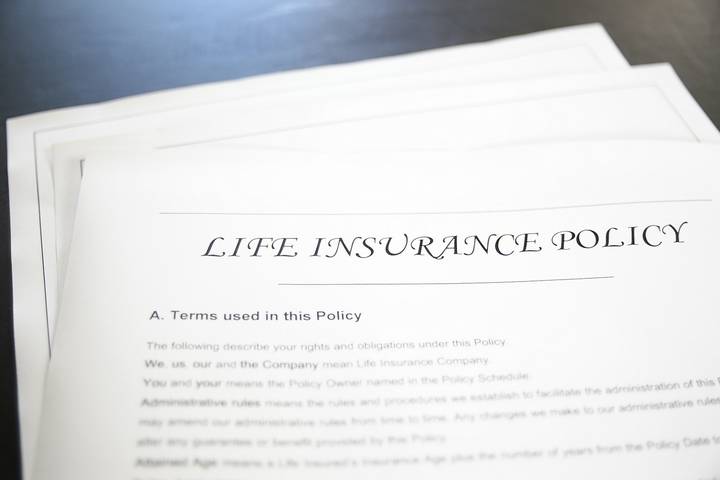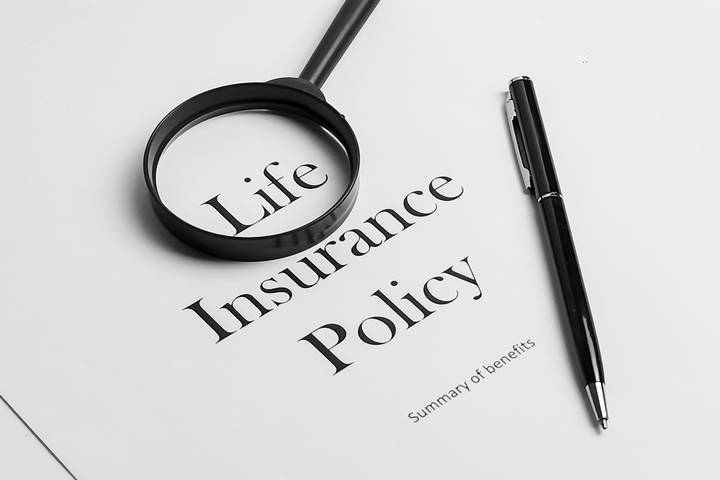What’s the best type of life insurance? This may sound like an unnecessary question, but with the plethora of life insurance policies on the market, each trumpeting to be the best, getting to the top of the pile is not an easy task.
When hunting down the best types of life insurance coverage, the two most common options are whole life insurance and term life insurance. These are the foundational life insurance policies from which all the other types emerge.
Each type of life insurance coverage comes with its own unique offerings. Below are the seven different types of life insurance coverage and what they entail:
Type #1: Term Life Insurance Coverage
 These types of life insurance coverage last for a set duration, and then it expires. Should you, God forbid, die before it runs its course, your designated beneficiary is paid a predetermined amount of money. This is referred to as “the death benefit.”
These types of life insurance coverage last for a set duration, and then it expires. Should you, God forbid, die before it runs its course, your designated beneficiary is paid a predetermined amount of money. This is referred to as “the death benefit.”
A term life policy is the most accessible and essential insurance policy. It’s important to understand that the premiums you pay are a payment for the death benefit that, in case you die, will go towards your chosen beneficiaries. The benefit can be paid monthly, as an annuity or as a lump sum.
A term life policy is more affordable than most other life insurance policies. The premiums depend on several variables, including the age of the policyholder. A term can last for up to thirty years.
Type #2: Whole Life Insurance Coverage
 This is a permanent life insurance policy that doesn’t expire. It comes with a death benefit and a cash value. The cash value amasses interest at a set fixed rate.
This is a permanent life insurance policy that doesn’t expire. It comes with a death benefit and a cash value. The cash value amasses interest at a set fixed rate.
Every month, a part of your premium goes into your policy’s cash value that offers a guaranteed return rate. How much money you receive as savings depends on your policy. With time, your policy’s cash value can grow into a decent payout.
Whole life insurance comes with extra features and additional fees. These types of life insurance coverage are extremely costly compared to a term life policy with a similar death benefit amount. Besides, a whole life policy is active only as long as you pay the premiums.
The cash value feature also comes with taxes, interest and surrender fees, and other stipulations, making it complicated to administer. However, if you need the cash value of whole life insurance coverage to cater to estate plans and endowments that could benefit from diverse options, this is a great option.
Type #3: Universal Life Insurance Coverage
 Like whole life insurance coverage, a universal life insurance policy comes with a cash value. The premiums are divided between the death benefit and the cash value. However, these types of life insurance coverage come with a twist: you don’t need a new plan to change the death benefit amount nor the premium if you have a universal life policy.
Like whole life insurance coverage, a universal life insurance policy comes with a cash value. The premiums are divided between the death benefit and the cash value. However, these types of life insurance coverage come with a twist: you don’t need a new plan to change the death benefit amount nor the premium if you have a universal life policy.
While you may have to pay a minimum premium for the policy to remain in force, you can also pay the premium using the cash value. What this means is that the accrued interests from your cash value could be enough to pay your premiums, which can be quite a relief should you be going through a rough patch.
The disadvantage of cash value from universal life insurance is that the interest is variable and set on prevailing market interest rates. Should the interest rate take a hit, you may have to raise your minimum premium to make up the difference in the cash value.
Depending on your policy limitation, you may also adjust the death benefit. However, should you choose to increase it, prepare for more underwriting (or more fees in case you decide to decrease it). This versatility of a universal policy makes it highly attractive, especially should your financials change.
Type #4: Variable Life Insurance Policy
 Although it’s similar to whole life insurance, the cash values between the two are very different. The cash value feature in a whole life insurance policy is in the form of a savings account. That’s why it has a guaranteed minimum rate. It also features dividend payouts from the insurer.
Although it’s similar to whole life insurance, the cash values between the two are very different. The cash value feature in a whole life insurance policy is in the form of a savings account. That’s why it has a guaranteed minimum rate. It also features dividend payouts from the insurer.
However, the cash value in variable life insurance is more like an investment. The funds are invested in several sub-accounts that operate like a mutual fund. While you can receive some decent profits, depending on the state of the usually volatile stock markets, you may end up losing money as well.
Variable life insurance policies are more attractive than whole life insurance policies. Still, they come with higher, tax-deferred growth. You can, however, only invest through your policy, meaning you don’t have a choice on what mutual funds in the market to invest in. If your risk appetite is high and you don’t mind investing in stocks, this is an excellent policy for you.
Type #5: Variable Universal Life Insurance
 Warning: this is not the same as no. 4 above. It’s also not entirely a blend of variable life insurance and universal policies, but mostly it is. Variable universal life insurance combines the best from the two policies. For instance, you can adjust the death benefit and the premium amount and, at the same time, use the cash value to invest in your policy’s cash value.
Warning: this is not the same as no. 4 above. It’s also not entirely a blend of variable life insurance and universal policies, but mostly it is. Variable universal life insurance combines the best from the two policies. For instance, you can adjust the death benefit and the premium amount and, at the same time, use the cash value to invest in your policy’s cash value.
A variable universal life policy has most of the features of the other two policies (nos. 3 and 4). However, unless you are adept at understanding insurance policies, these types of life insurance coverage may be too complicated for you, both as an insurance and as an investment option. Instead, you’re better off taking a combination of a regular term life insurance policy, which is more affordable, and an investment vehicle such as a dedicated mutual fund.
Type #6: Guaranteed Issue Life Insurance Policy
 Borrowing from the concept of a simplified issue life insurance, with this policy, it’s not mandatory to answer questions relating to your health or take a health exam. The most important metric is your ability to pay the premium. The insurance company will only need your area of residence, sex and age. So, if declining health is a major concern (especially in older people), this is the ideal policy.
Borrowing from the concept of a simplified issue life insurance, with this policy, it’s not mandatory to answer questions relating to your health or take a health exam. The most important metric is your ability to pay the premium. The insurance company will only need your area of residence, sex and age. So, if declining health is a major concern (especially in older people), this is the ideal policy.
Type #7: Final Expense Insurance Policy
 If you don’t have guaranteed issue life insurance, you will need a way to cover your funeral expenses. A unique policy, final expense insurance coverage includes all the costs associated with your demise. These comprise of cremation, medical bills, the funeral, and other related expenses.
If you don’t have guaranteed issue life insurance, you will need a way to cover your funeral expenses. A unique policy, final expense insurance coverage includes all the costs associated with your demise. These comprise of cremation, medical bills, the funeral, and other related expenses.
This policy is only accessible to people who’ve reached a particular age. It also comes with a cash value that grows with time.

